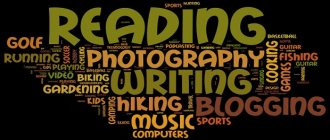- November 3, 2018
- Psychology of communication
- Anatoly Ivanov
In this article we'll look at why people don't make eye contact. There are several explanations for the origin of this phenomenon. A number of experts say that people who avoid direct eye contact are simply afraid of being caught in a lie. Other scientists believe it's a matter of fear that staring too closely will be seen as threatening or intrusive.
So what does the interlocutor’s reluctance to make eye contact during a conversation actually mean?
Eyes are the mirror of the soul
Experts from the University of California are convinced that 93% of the quality of communication is determined by non-verbal means. Body language, tone, timbre of voice and, of course, the expression of the eyes - all this helps to understand what a person really wants to say.
Other figures are given in a study led by Steven Janik and Rodney Wellens from the University of Miami in Florida: 44% of attention during communication is focused on the eyes and only 12% on the mouth. It is the eyes that are the “litmus test” of our emotions: they reflect fear, disappointment, bitterness, joy... But why then do we look away so often?
Does it hurt your eyes? Measures to prevent and relieve fatigue
High-quality and healthy sleep. As often as possible, you should perform simple preventive, relaxing exercises for the eyes, looking out the window and looking alternately at objects at close and far distances. It is important to take care in advance about the lighting of the workplace and the position of the computer screen. One of the main rules of good well-being during long and monotonous work - massaging the collar area and performing light kneading physical exercises. For the purpose of prevention, it is recommended to take courses of vitamins and dietary supplements in food. When swimming in the pool, you should wear special safety glasses to protect your eyes from pathogenic bacteria and chlorinated water. On sunny days it is preferable to wear glasses to prevent burns to the cornea of the eyes.
Trying to concentrate
Psychologists Fiona Phelps and Gwyneth Doherty Sneddon in their work “Gaze-Disgust” tried to determine the dependence of the duration of the gaze on the method of obtaining information and the level of its complexity. They conducted an experiment in which two groups of 8-year-old children were asked easy and difficult questions, with the former receiving information face-to-face and the latter through a video monitor.
It turned out that the more complex the question, the more often the child looked away in an attempt to concentrate and find the answer. It is interesting that a similar situation was observed more often in groups where the dialogue was built face to face.
How to learn not to look away?
There are several exercises that will help you learn not to look away during a conversation, as well as generally improve your peripheral vision abilities and give your eyes a “piercing” quality.
All exercises must be performed so as not to overdo it. If, after starting to perform various movements, you begin to feel dizzy or your eyes water, you should stop immediately and continue the next day.
Also, the reason for looking away is often simple self-doubt, which needs to be overcome during conversation sessions with a psychologist; exercises are only a necessary part of the training.
Eye muscle training
The first exercise is to train the muscles of the eyeball.
- On a simple office sheet of paper, you need to draw a dot in the middle and place it in front of you at a distance of one and a half to two meters. Look closely at it for 2-3 minutes, constantly keeping it in focus and without distraction.
- When you have managed to tune in, you need to slowly make circular movements with your head, first along a small radius, gradually increasing it, for 10 minutes. The pattern of movement should be similar to the pattern on a snail shell.
- Also, for 10 minutes, moving only your head and keeping your gaze on the point, make various patterns as you wish, periodically accelerating.
If it becomes difficult during the exercise, you should take a break and continue after a few minutes.
Concentration
The second exercise is to improve concentration and learn not to blink too often.
- You should place the same sheet of paper in front of you and look at it without blinking for as long as possible.
- Then close your eyes, and, without moving your head, just your pupil, begin to look at any point on the ceiling for 5 minutes, blinking as rarely as possible.
- You also need to look at any point on the floor, concentrating your gaze on it and without blinking.
Read more: 9 exercises to improve vision
Liar? Liar!
There is a persistent stereotype that when lying, a person is unable to look his interlocutor in the eyes. However, British psychologists from the University of Portsmouth are confident that everything is happening exactly the opposite.
The person telling a lie wants to make sure that his “noodles” are securely settled in your ears, so he continuously monitors your emotions, looking intently into your eyes. But is this behavior effective?
Photophobia in children
In children, the appearance of sensitivity to light is due to the fact that the visual organs are not sufficiently developed. The symptom occurs in response to irritation from both natural light and artificial lighting. The child’s defense mechanism is triggered, he begins to blink quickly and squints. If this symptom persists for a long time and appears regularly over several days, this is a reason to see a pediatrician. In infants, the main causes of photophobia are:
- congenital photosensitivity;
- childhood infectious diseases - rubella, measles;
- aniridia – absence of the iris;
- cryptophthalmos – absence of eyelids;
- abnormalities of the eyeball - microphthalmos, anophthalmos;
- underdevelopment of eye structures - iris, cornea, lens, vitreous body;
- retinopathy of prematurity is a severe eye pathology with structural and functional changes in the retina and vitreous body.
In preschool children, photosensitivity manifests itself as a result of common inflammatory processes in the eye (conjunctivitis), which develop against the background of colds (acute respiratory infections, flu). Less commonly, when a foreign body gets into the eye.
Schoolchildren suffer from photophobia for the following reasons:
- systematic overstrain of the organ of vision;
- violation of the daily routine;
- constant lack of sleep at night;
- lack of physical activity according to age requirements;
- chronic fatigue;
- wearing contact lenses.
Symptoms in children directly depend on the causes. If a child has an acute inflammatory process, a childhood infection (measles), photosensitivity will be accompanied by an increase in body temperature and increased lacrimation.
In case of serious diseases (nerve paralysis, developmental anomalies), signs of photophobia are accompanied by the following manifestations:
- increased sweating;
- redness of the skin;
- drooping eyelid (ptosis);
- dilated pupil, does not respond to light stimulus.
The cause of photophobia in children can be not only diseases of a different nature, but also stress, lack of sleep or excessive fatigue. Children who spend a lot of time at the computer also often experience photophobia. The cause of this phenomenon may be prolonged treatment with antibiotics.
Photophobia among children and schoolchildren is not uncommon. The eyes become too sensitive, resulting in a burning sensation, increased blinking, and the child squints. If you notice these symptoms, they are permanent and you need medical help.
If your son or daughter complains of the presence of a foreign body with severe pain when exposed to light, check the thyroid gland. With bilateral damage, body temperature often rises.
If there is burning, itching, or lacrimation, we can talk about conjunctivitis - for the treatment to be effective, first conduct a comprehensive health examination.
It is important to correctly identify the cause of the problem and eliminate it - working with symptoms is useless. Parents should also ensure that the child spends moderate time at the computer, TV, gets enough rest, and gets enough sleep.
Walk enough time in the fresh air, keep your diet balanced. Eye gymnastics is useful for children.
Power of persuasion
Sometimes liars do this: knowing that the interlocutor will be unpleasantly surprised by his shifting gaze, he looks intently through the person, directing his gaze to the bridge of his nose.
A series of experiments conducted by psychologists Francis Chan of the University of British Columbia and Julia Minson of the Kennedy School at Harvard University showed that the more intently a speaker looks into the eyes of the interlocutor, the less convincing his speech seems. Have you ever noticed that many public figures do not look into the eyes, but a little lower or at the bridge of the nose? Close visual contact can often be seen as a clear attempt to impose one's point of view.
Research by Japanese scientists
Japanese scientists from Kyoto University conducted a study that showed that when making eye contact, a person is distracted and cannot direct his thoughts to something other than the topic of the conversation. This means that many people avoid making eye contact during dialogue in order to avoid overloading their brain unnecessarily.
Experts also remind that the effect of eye contact on the brain was previously established in another study, when Italian scientists found that sometimes people who were asked to look into someone's eyes for ten minutes began to hallucinate after a while.
Flirting triangle
A smile, a wink, a long look straight into the eyes... Such behavior is regarded in modern society as an attempt at flirting. Many of us probably avoid prolonged eye contact for this very reason. What if a person thinks something wrong?
Communication consultant Susan Rabin confirms this stereotype in her book 101 Ways to Flirt: Long eye contact is extremely important for flirting, with men and women using different "techniques." If representatives of the stronger half of humanity prefer a direct gaze, which they at a subconscious level consider to be a manifestation of strength and courage, then women “slide” their gaze along the so-called “flirting triangle”: the lady first visually examines the entire “object”, if the “test” is passed by the subject successfully, the gaze “rests” on the eyes.
Photophobia as a symptom of diseases
If photophobia is observed for a long time, it can be a symptom of various diseases. This symptom is accompanied by many ophthalmological diseases.
Migraine
Migraine is a chronic neurological disease. A distinctive feature of this disease is pain on one side of the head. The cause of attacks may be a violation of cerebral circulation, central nervous system disease, low or high blood pressure.
In people prone to migraines, an attack can be triggered by a change in weather, a stressful situation, being in a stuffy room, or overwork. Pain in the temple or eyebrow area can be triggered by noise, bright light and certain odors.
A contrast shower, a good night's sleep or a cup of warm tea will help to quickly stop an attack. Such people should try to rest more and lead a healthy lifestyle.
Glaucoma
Glaucoma is caused by increased intraocular pressure. This disease is accompanied by impaired visual fields and deterioration of visual function. A feature of glaucoma is a change in the color of the pupil, it becomes greenish or blue.
The disease can be triggered by a violation of the outflow of intraocular fluid. The cause of the disease can be infections and stressful situations. long-term use of hormones and ophthalmological diseases. All patients are at risk. over 50 years of age.
The reason is misfortune
Dr Peter Hills, who teaches psychology at Anglia Ruskin University, and Dr Michael Lewis from Cardiff University, have published a paper which suggests that unhappy people tend to avoid eye contact.
They are more likely to pay attention to a new hairstyle, beautiful shoes or the scent of perfume. Perhaps this happens because the suffering person does not want to immerse himself in the true emotional state of the interlocutor. He has his own problems “through the roof”!
Preventive recommendations
If you are taking antihistamines, antibiotics, or blood pressure medications, you should wear sunglasses.
These medications help increase the sensitivity of the retina. You can’t sit in front of a computer or TV screen for a long time; you need to be in the fresh air more often and get a good night’s sleep. If the work involves welding, be sure to use a protective mask. If photophobia is caused by a cold or flu, it will go away after exposure to antipyretic medications.
Visual, auditory or kinesthetic?
Neuro-linguists offer their explanation. Whether a person likes to look into the eyes or tries to quickly look away - it depends on the way he thinks. Visual learners think through visual images, which is why it is so necessary for them to focus on their eyes in order to “read” the missing information.
For auditory learners, sounds are important - they are more likely to listen to the timbre and intonation of the voice, looking somewhere to the side. Kinesthetics, based on intuition and tactile sensations, during communication try to touch the interlocutor, hug, shake hands, while they usually look down.
What should you focus on?
So, let's figure out why people don't make eye contact. If you constantly have to deal with such a feature of a person, an uncomfortable feeling appears during communication. It is not easy to have a conversation even on abstract topics. They look into such a person’s face, but he deliberately looks away. When addressing him, he looks at another part of the face (lips, chin) or, generally, to the side. If he happens to look straight into your eyes for a moment, he will immediately look away or even move away a little after such a moment, as if from an electric shock.
This feature, however, can have completely different explanations. To better understand the origin of the phenomenon when some people cannot look people in the eye, you need to pay attention to the following points:
- does a person look away when communicating with other people, or does this only apply to you;
- is this feature due to the topic of the conversation (work, personal life, gossip, etc.);
- what can make him look straight into his eyes for a while (anger, distrust, fear, laughter, surprise);
- does such a habit depend on his gender (for example, a person communicates normally with representatives of his own sex, but averts his eyes with those of the opposite sex and vice versa);
- Is such a person generally characterized by reticence, or is he quite sociable?
Aggression, or What does he need?
Social psychologist Julia A. Minson is convinced that visual contact, on the one hand, is a very intimate process, on the other hand, it can reflect the desire of one person to dominate another.
“Animals will never look each other’s eyes,” says Julia, “unless they then intend to fight for dominance.” Indeed, a person looking closely at you gives rise to a feeling of anxiety and a lot of questions.
If this is a stranger on public transport or at a deserted bus stop, then the question immediately arises: “What does he need?” Nervousness can lead to mutual aggression. If a colleague, a good friend, or a nice saleswoman in a supermarket stares into your eyes, you want to quickly look at yourself in the mirror and check if the parsley stuck to your teeth during lunch or if the mascara ran. Each of us has experienced similar feelings of awkwardness, so we often prefer to quickly look away.
Sep 20, 2016tigress…s
Psychologists' opinions
If a person avoids looking directly into the eyes of his interlocutor, then he has a specific reason for this. Before you look for a solution to such a problem, you need to make sure that you really want it. For example, if a person experiences strong hostility, it may be worthwhile to increase the distance as much as possible to avoid unpleasant situations in the future. In all other cases, you can find a solution to why a person avoids making eye contact
Sometimes it's enough to just wait a little. Once the person gets to know you better and gets used to it, perhaps such awkwardness will disappear on its own. In this case, you need to show tact and patience, give him the opportunity to open up on his own. Usually, openness, sincerity and a kind attitude sooner or later melt even the coldest communication. When a person is in love with you, you need to at least somehow hint at reciprocity, otherwise he may never dare to take the first step. We looked at why people don't make eye contact.
If a person does not make eye contact during a conversation, a psychologist’s opinion
The ability to confidently look into the eyes of your interlocutor depends on the severity of such character traits as: self-confidence, courage, shyness and firmness.
A few seconds of eye contact can give a person more information than 3 hours of candid conversation. It is precisely because of the strong flow of information that it is psychologically difficult to constantly look into the eyes of your interlocutor.
Quick navigation through the article
Reasons for lack of eye contact
The reason why a person does not look his interlocutor in the eyes may be due to his own internal complexes or be a kind of reaction to the unpleasant personality of the interlocutor. Scientists identify the following reasons:
- Shyness. When a person experiences a feeling of love or interest in his interlocutor, he may be embarrassed that the object of sympathy will guess his feelings from his eyes;
- Guilt;
- Diffidence. Deep emotional excitement is also manifested by the habit of fingering something during communication;
- The desire to deceive the interlocutor or hide any information;
- Feeling of fear. Subordinates are often afraid to look their boss in the eye;
- Lack of interest in the interlocutor. Other signs include constantly looking at the clock, yawning, interrupting conversations, for example, with phone calls;
- The interlocutor is unpleasant. In the company of some people, it becomes uneasy because of the heavy, piercing gaze. There is a desire to look away and stop communicating as soon as possible.
To learn the correct behavior during a conversation, a person needs to develop confidence in himself and in what he says. The following psychological techniques will help achieve this:
- It is necessary to listen carefully to the interlocutor, only occasionally looking at the person’s face;
- At the beginning of a conversation, you don’t need to try to look straight into the eyes; it’s better to cast a general glance, without focusing on where it is directed;
- You should not look at the bridge of your interlocutor’s nose, as the gaze becomes oppressive and unpleasant;
- When speaking, gestures should be added to words; this gives a feeling of control over the situation;
- During a conversation, try to mentally hold your interlocutor’s shoulder or stroke his arm, this will help you calm down and collect yourself;
- You can look directly into the eyes of your interlocutor when communicating for no more than 5 seconds, then you should smoothly move your eyes to the side, and after a while look again;
- Watch your facial expression, control your emotions. The face should reflect friendliness, goodwill, and interest in the conversation.
It is not for nothing that the eyes are called the mirror of the soul. It is the gaze that helps us learn about the feelings and emotions of the interlocutor, even if outwardly he does not show them in any way. However, there are times when a person does not look you in the eyes. How should this be assessed? In our article we will tell you the main reasons for this.
6 reasons why a person doesn't make eye contact
Eyes are the connecting link between the human soul and the outside world, so they are not capable of lying. One of the most common versions as to why a person does not make eye contact is that the person is simply deceiving or hiding the truth.
However, psychologists have proven the fact that this is not true in any case. There are several probable reasons why a person does not look you in the eyes and looks away.
This reason has been scientifically confirmed. Shy people tend to hide their own feelings, but their eyes can easily make them obvious. A look can convey interest, love and much more, and a person does not always want his feelings to be understood at this very moment. Therefore, a person cannot constantly look into the eyes.
2. Too much information
Just a second glance is enough for a person to receive as much information about another as he could get in several hours of communication. Due to the overload of this information, it is necessary to look away for a while.
Often, constant face-to-face communication makes you nervous and irritating. It begins to seem that the interlocutor is trying to unravel your entire essence, and this is not pleasant for anyone.
4. Feelings of self-doubt
If during a conversation a person is nervously fiddling with something, fiddling with his hair, the tip of his nose, his ears, this is a clear sign of real emotional excitement. This type of person does not look you in the eye because he is unsure of his own actions and what kind of look would be appropriate in this situation.
The heavy, piercing gaze of the interlocutor causes a feeling of discomfort; it is unpleasant to look into the eyes of such a person.
6. Lack of interest in the interlocutor
You can recognize a lack of interest not only by looking away, but also by yawning, regularly glancing at your watch, interrupting the conversation under various pretexts, etc. In this case, it is better to try to stop communication as soon as possible.
To ensure that communication is always positive and productive, learn to look away from the eyes of your interlocutor as little as possible. Thanks to this, it will be easier for you in both friendships and work relationships.
Why doesn't a person make eye contact? Psychologists' answer
According to some observations of people, it was revealed that most people do not look each other in the eyes when talking. People in love use eye contact to a greater extent, while ordinary interlocutors, as a rule, do not make eye contact at all.
At the same time, it was revealed that managers who have an effective management style look them straight in the eyes when communicating with their subordinates.
We all know that we need to look the other person in the eye when talking, but few of us are able to do this comfortably. Sometimes we try to look into the eyes of our interlocutor, even if we are not very comfortable, but at these moments we feel awkward because we have not been accustomed to this since childhood.
In some countries (especially Muslim countries), women do not make eye contact at all when interacting with men or older people, as this is a sign of disrespect.
Some people believe that when communicating you should look at the bridge of your interlocutor's nose, but such close attention can make your opponent nervous. Well, a direct and persistent gaze sometimes causes uncertainty in a person.
How to learn to look people in the eyes
Try to look at your interlocutor with a softer gaze, while trying to cover a larger area with your eyes, then you will be able to see your interlocutor with peripheral vision for a very long time. The main thing is not to lose eye contact, do not be nervous, and try to behave calmly when talking.
When looking a person straight in the eyes, pay attention to your facial expression; you should look at him softly and kindly. As a rule, when you look closely, you can see a certain rigidity in the gaze, caused by the effort not to look away. If you want to avoid this, then imagine that you are mentally supporting your interlocutor by the shoulder, then your gaze will definitely acquire a certain warmth.
Not everyone can look calmly into the eyes, since most of us do not have confidence in ourselves and in what we say. But this is very important, because when making eye contact, the main cause of nervousness is precisely uncertainty.
The main thing is to understand that by looking your interlocutor straight in the eyes, you are thereby establishing contact with him. At the same time, you must be open and your main goal is to win over your interlocutor.
Try to be attentive to the facial expression of your interlocutor; you can “mirror” him somewhat, that is, take the same pose, or demonstrate emotions using the same facial expressions.
The main thing is not to confuse the ability to look into the eyes with the ugly habit of looking at people, since the latter most often causes hostility on the part of your interlocutor.
Some people ask why a person doesn't make eye contact when talking. Sometimes there may be several reasons for this, the reception is completely different. Therefore, it is impossible to say that a person is lying or hiding something.
Reasons why a person does not make eye contact
- Shyness or lack of self-confidence;
- If he wants to hide something, such as affection or love;
- The insincerity of his feelings. On the contrary, he may hide something, the fact that he is married, married or other acts;
- Heavy look. People who are very powerful have an incredibly heavy gaze that pierces and is unpleasant to others. Cold, seemingly empty, embittered eyes will not please everyone;
- Doesn’t want to give information about himself, is used to avoiding answers, often lies;
- No interest in the interlocutor, fatigue.
Looking straight ahead imposes certain obligations, such as answering honestly a question that has not yet been answered. I don’t want to lie, but I can’t tell the truth either. That is why a person hides his gaze and avoids answering. There could be a lot of reasons. And an open, “honest” look does not always mean that a person is not lying. They hold up just fine when looked at point-blank. Such people are used to it, and their gaze is quite trained.
You should not pay special attention to this fact. Not everyone likes to be in close quarters; many are stressed by crowds and views from all sides. If one is confident in himself, then the other may be in constant turmoil. Therefore, you should not judge by the look and assume that since a person does not look into the eyes, it means that he is lying, in love or wants to deceive. Maybe he's just not confident in himself or doesn't want to show his weaknesses. People are different. Upbringing, habits or character very often leave their mark.
How to make a person look into your eyes?
If a person does not look into the eyes, then you can try to look into them furtively. Call for a conversation on an interesting topic, intrigue, ask a difficult question and see the reaction. Many people open up at this time. You can look at his communication with other people. If a person does not make eye contact all the time, perhaps he has such a character. May be stubborn or hide feelings. He cannot control himself all the time, so sooner or later he will be able to look into his eyes.
Not all people like to look directly at the other person. Some people generally find direct gaze unpleasant. If a person avoids looking at you, it doesn’t mean that he is hiding something or not saying anything, maybe he just has that style of communication. Most often, people who are shy and unsure of themselves look away. Also, some people do not make eye contact if their parents, leaders are authoritarian, or they have a habit of obeying. It’s easier to lower your eyes and tell them “yes” than to hold your gaze.
Attention, TODAY only!
amvtrade.ru
How can you tell by gestures that you are being lied to? | Prose of life
Hands to mouth. If you notice that a person covers his mouth with his hands during a conversation, this means that he seems to be trying to keep the words inside himself, even if the gesture comes down to a light, barely noticeable touch of his lips with his fingertips.
Stiffness of movements. If a person is not sure of what he is saying, he simply stops gesticulating: he is so preoccupied with his words that the movements of his hands stop. In a calm conversation, you can notice the movements of the interlocutor’s hands, even if he keeps his hands in his pockets. However, a sharp reduction in gestures is observed when a person is nervous and depends on the nature of the interlocutor.
Licking lips. Nervous licking of lips indicates a person’s uncertainty in his words, or he is preoccupied and nervous about something.
Nervous cough. A nervous cough may just be a nervous cough. However, if a cough appears as soon as the person begins to explain his position, and is accompanied by some other characteristic gestures, then you may think to suspect the person of lying.
Blush. Blushing is a clear signal that a person is feeling awkward. Blushing may appear as a result of some words spoken in a conversation, due to the presence of a certain person, when you cannot behave naturally and cannot express your true feelings. But it also happens when blush indicates a feeling of awkwardness that a person experiences because of his own words.
Intermittent breathing. Irregular breathing is a clear sign of discomfort. In order to detect a change in the interlocutor’s breathing rhythm, it is necessary to carefully observe him.
Stomping is typical for people with a high degree of internal tension. Most likely, this is a sign that the person wants to speed up the conversation. Although sometimes stomping gives away liars.
Slight fussiness. When a person lies, his body goes out of control, thoughts and words do not correspond to each other. A professional liar may have barely noticeable hand movements, there seems to be no significant changes in his face, his voice is loud and clear - however, despite obvious signs of self-confidence, there remains a feeling of some kind of fuss.
Avoiding direct gaze. Imagine this situation. You are conducting an interview and when you ask a visitor why he left his last job, he averts his eyes and looks away while answering you. It will become clear to you that the question asked for some reason evokes unpleasant memories in the person, that there is something that the interviewee clearly does not want to talk about.
This gesture should always be remembered. When you doubt whether a person is lying or telling the truth, you can ask him some leading question and follow his gaze.
Closed eyes. Some people blink frequently when speaking, and sometimes even close their eyes for a moment. This behavior may indicate that they do not like the situation in which they find themselves. They seem to separate themselves from the environment that is unpleasant for them. Try to close your eyes yourself and say: “I am telling the truth.” Doesn't match, right?
Inexpressive voice. When people lie, the voice loses expressiveness and becomes flat. For example, when a person spoke with enthusiasm, gesticulated vividly, and suddenly his voice suddenly becomes sluggish, gesticulation is reduced to a minimum. Such a sudden change may be evidence of a lie.
We looked at the most obvious signs of lying. However, we should not forget that a person can use similar gestures when he is unsure of himself or is nervous. Therefore, before concluding that your interlocutor is lying, ask him clarifying questions that will help you find out his true feelings.
I hope my advice helps you. I wish you good luck, dear reader!
shkolazhizni.ru
Allergic conjunctivitis and hay fever
Allergic conjunctivitis is another spring problem that literally develops before our eyes. The reason for this is hay fever, a reaction to pollen from plants blooming in spring. Allergic conjunctivitis is very easy to recognize. If, in addition to watery and itchy eyes, a person develops a runny nose (allergic rhinitis), breathing problems and a dry cough, as well as headaches, we are talking about this disease.
Symptoms of allergic conjunctivitis:
- Severe itching of the eyelids and burning under them.
- Tearing.
- Swelling and redness of the conjunctiva.
- Photophobia.
Considering that all these manifestations are combined with a runny nose, cough and various other forms of hay fever (laryngitis, tracheitis, etc.), spring becomes a nightmare for such patients.
The ideal option is to escape from the blooming source of your allergens to the other side of the Earth and return when it ends. But not everyone manages to do this. Then antihistamines and minimizing contact with pollen come to the rescue.











